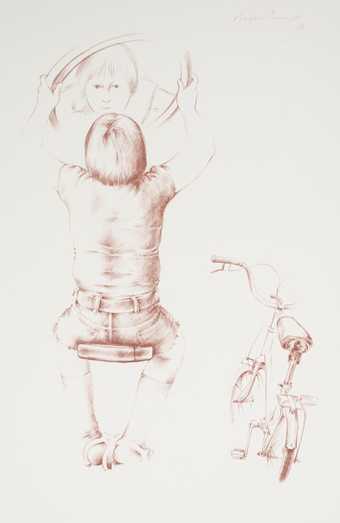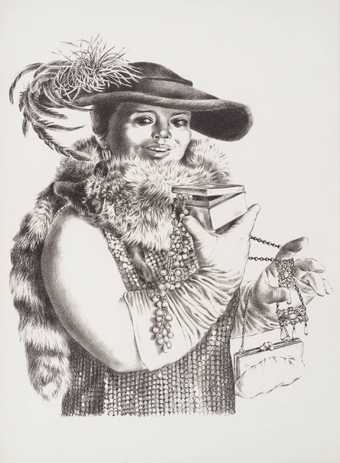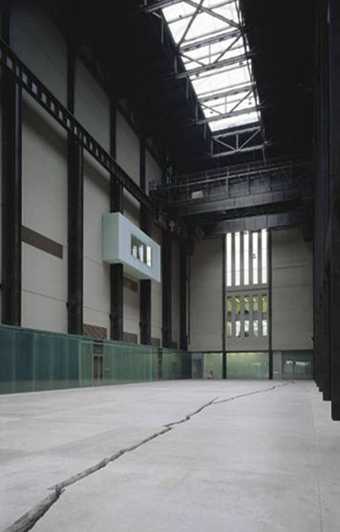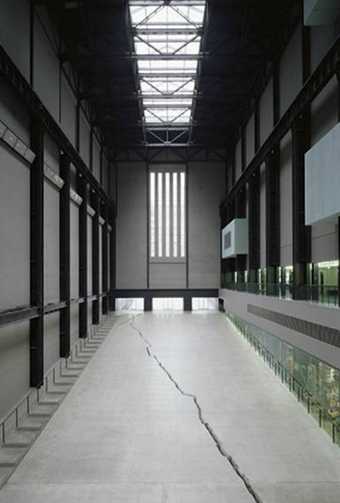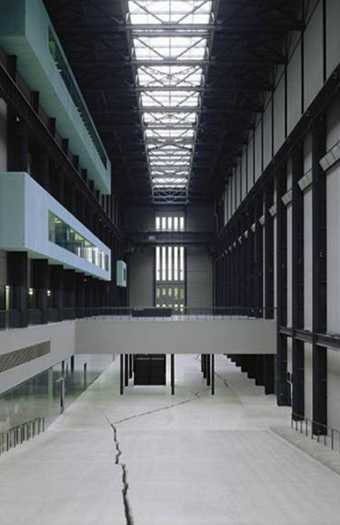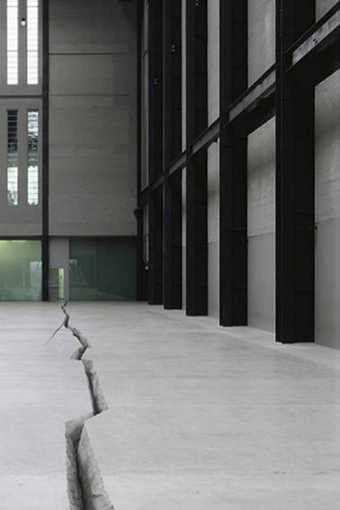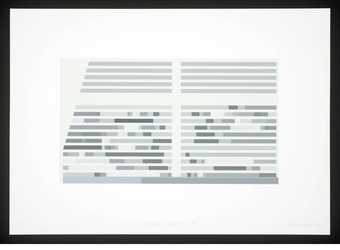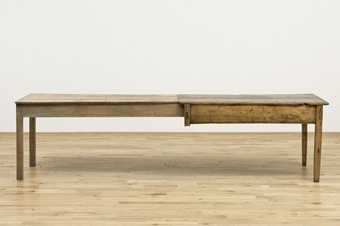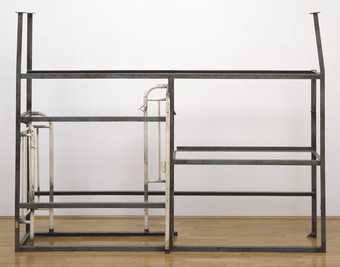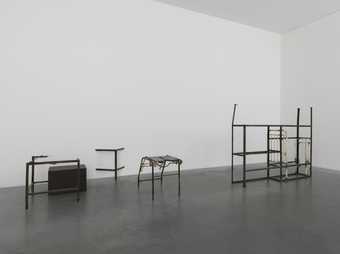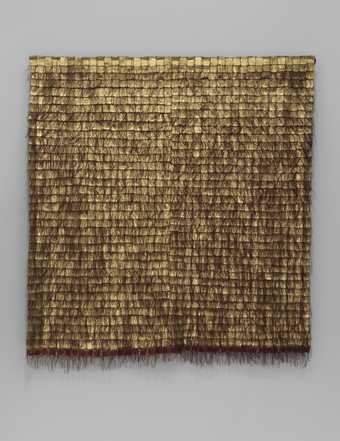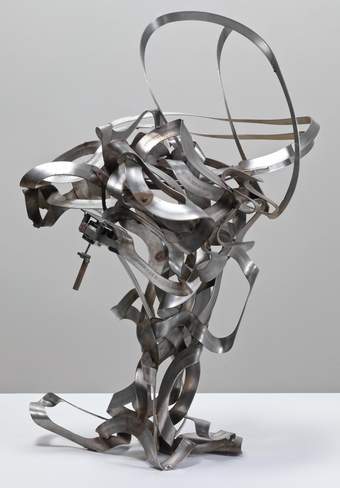
Not on display
- Artist
- Doris Salcedo born 1958
- Medium
- Wood, cement and metal
- Dimensions
- Object: 2140 × 1495 × 570 mm
- Collection
- Tate
- Acquisition
- Presented by the American Fund for the Tate Gallery 1999
- Reference
- T07524
Summary
Untitled is a sculpture combining two pieces of furniture with poured cement. Salcedo removed the two doors and single drawer from an old-fashioned free-standing wooden wardrobe she had bought from an antique shop. She inserted an old wooden chair into the opening on one side, so that the seat is inside the body of the wardrobe and the back crosses the central partition on the outside, before sealing the three openings into the wardrobe with cement, poured onto a supporting metal armature bulked with styrofoam. Cement residue filling all the crevices in the wardrobe and chair emphasise the sculpture’s fused appearance and evokes the sealing of a tomb.
The forced union of disparate elements is a central feature of Salcedo’s sculptures of the late 1980s through the 1990s. Such works as Untitled, 1987 (T07836) and Unland: audible in the mouth, 1998 (T07523) merge structures that, the artist has commented, ‘don’t fit and appear to be like the mutated remains of an accident’ (quoted in Garcia-Anton). For Salcedo, the tension arising from the clash of materials expresses the emotional and psychological unease at the heart of her work, which is motivated by the traumatic effects of civil war on the Columbian people. The use of particular materials to express this was inspired by the work of German artist Joseph Beuys (1921-86), which Salcedo discovered while she was studying art at New York University in the early 1980s (MFA 1984). Beuys’s notion of ‘social sculpture’ – integrating political awareness with making – and his focus on materials to convey specific meanings were a significant influence on her practice. She has elaborated:
The way that an artwork brings materials together is incredibly powerful. Sculpture is its materiality. I work with materials that are already charged with significance, with a meaning they have acquired in the practice of everyday life. Used materials are profoundly human; they all bespeak the presence of a human being ... The handling of materials in each piece is the result of a specific act, related to the event I am working on. It is an act of everyday life that gives shape to the piece. In some cases it is a hopeless act of mourning ... The processes go beyond me, beyond my very limited capacity, whether because one single person couldn’t possibly have made the work (Unland, 1995-8), or because of the brutality and massiveness of the act (untitled furniture sculptures, 1995-8) ... [In] the situation in which I live ... you can see advanced technology existing side by side with extreme forms of underdevelopment. Oppositions of this kind are part of my life ... reality is always disrupted, always severed ... it is not simply a mixture but a cruel juxtaposition of things striving violently to manifest themselves simultaneously ... The handmade element of the work marks not merely an absence of industrial values, but also a wholehearted rejection of rationalism. Paradoxically war is the maximum expression both of industrialism and of its destruction ... I’m interested in the notion of the artist as a thinker attuned to every change in society but at the same time producing art that is irreducible to psychological or sociological explanations.
(Quoted in Basualdo, pp.21-3.)
Untitled, 1998 is one of a large group of Untitled
sculptures combining domestic wooden furniture with cement that Salcedo created during the 1990s. The first series was exhibited as a large group at the Carnegie International, 1995 in Pittsburgh before being dispersed. Tate’s work was part of an installation in Liverpool’s Anglican Cathedral during the first Liverpool Biennial in 1999. The sculptures, mainly comprising cupboards, chests, armoirs and wardrobes, alone or combined with chairs, bed frames, tables and other chests, resonate in a variety of ways. The level surfaces of the poured cement combined with more or less visible sections of steel armature have industrial associations allied with minimalist sculpture, which the blocking of space – either filling openings or creating actual blocks on and under chairs – enhances. These sculptures recall such works by British artist Rachel Whiteread (born 1963) as Untitled (Nine Tables), 1998 (T07984) and Untitled (Rooms), 2001 (T07938) in which empty space – the space under a table and the negative space of a room – appears solid. In contrast to the rough, heavy cement with its blank, impassive flat surfaces the wooden furniture in Salcedo’s work appears fragile and mortal. Made by craftsmen, by hand, the sculpture’s wardrobe and chair have a history of relationships with human bodies – those that made them and those for whom they were created. In relation to the cement, they stand in for bodies; although as their openings are closed they are bodies that can no longer function; they are sealed and silenced in a manner that powerfully evokes death and entombment. As well as uncomfortably fusing two or more pieces of furniture, Salcedo’s Untitled series often incorporates clothing into the layer of concrete filling the openings in the cupboards, drawers and cabinets suggesting even more poignantly the remains of people who are no longer alive.
Further reading:
Carlos Basualdo, Nancy Princenthal and Andreas Huyssen, Doris Salcedo, London 2000, reproduced p.116 and pp.144-5 in colour.
Anthony Bond, Trace: 1st Liverpool Biennial of International Contemporary Art, exhibition catalogue, Tate Gallery Liverpool, 1999, pp.130-3.
Katya Garcia-Anton, ‘Silent Witness: Doris Salcedo at the Tate Gallery’, Art Newspaper, no.94, July-August 1999, p.21.
Elizabeth Manchester
December 2007
Does this text contain inaccurate information or language that you feel we should improve or change? We would like to hear from you.
Display caption
In the 1990s, Salcedo made a series of sculptures by filling items of furniture with concrete. The resulting works suggest the violation of domestic space and the human body. Rather than an empty space waiting to be filled with worldly belongings or childish fantasies, the wardrobe becomes hermetically sealed and inaccessible. The configuration of armoire and chair is akin to that of a Pietà, the traditional depiction of the Madonna holding the body of the dead Christ on her lap.
Gallery label, July 2007
Does this text contain inaccurate information or language that you feel we should improve or change? We would like to hear from you.
Explore
- emotions, concepts and ideas(16,416)
-
- emotions and human qualities(5,345)
-
- victim(38)
- universal concepts(6,387)
- furnishings(3,081)
-
- cupboard(50)
- birth to death(1,472)
-
- death(685)
You might like
-
Rafael Penagos Boy with Mirror
1976 -
Enrique Grau Jewel Box
1977 -
Antonio Caro Colombia
1977 -
Doris Salcedo Shibboleth I
2007 -
Doris Salcedo Shibboleth II
2007 -
Doris Salcedo Shibboleth III
2007 -
Doris Salcedo Shibboleth IV
2007 -
Alison Turnbull Plant Bands and Systematic Sections
2007 -
Doris Salcedo Unland: audible in the mouth
1998 -
Doris Salcedo Untitled
1987 -
Beatriz González The Last Table
1970 -
Feliza Bursztyn The Mechanical Ballet
1979 -
Doris Salcedo Untitled
1986–7 -
Olga de Amaral Alchemy 50
1987 -
Feliza Bursztyn Untitled
1968

